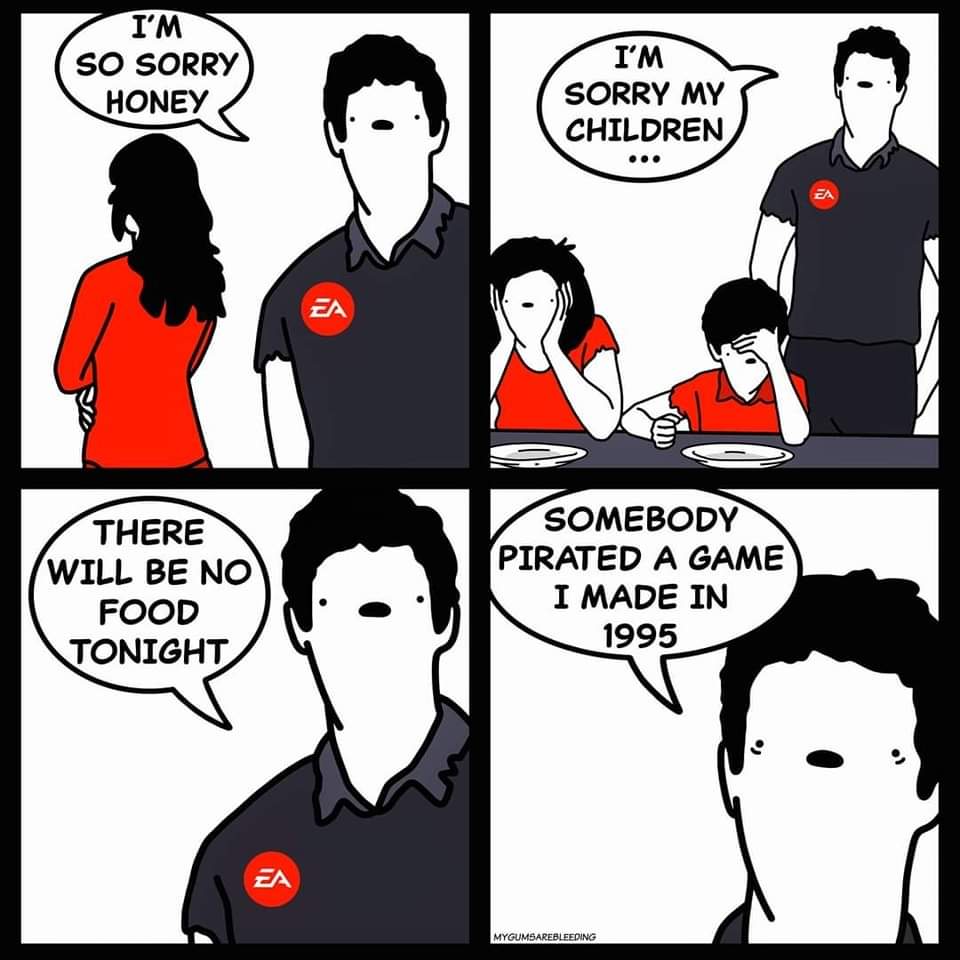this post was submitted on 21 Sep 2023
2253 points (98.0% liked)
Comic Strips
12745 readers
3723 users here now
Comic Strips is a community for those who love comic stories.
The rules are simple:
- The post can be a single image, an image gallery, or a link to a specific comic hosted on another site (the author's website, for instance).
- The comic must be a complete story.
- If it is an external link, it must be to a specific story, not to the root of the site.
- You may post comics from others or your own.
- If you are posting a comic of your own, a maximum of one per week is allowed (I know, your comics are great, but this rule helps avoid spam).
- The comic can be in any language, but if it's not in English, OP must include an English translation in the post's 'body' field (note: you don't need to select a specific language when posting a comic).
- Politeness.
- Adult content is not allowed. This community aims to be fun for people of all ages.
Web of links
- !linuxmemes@lemmy.world: "I use Arch btw"
- !memes@lemmy.world: memes (you don't say!)
founded 1 year ago
MODERATORS
you are viewing a single comment's thread
view the rest of the comments
view the rest of the comments

The thing people forget is that 3d printing doesn’t just enable the direct manufacturing of parts, it also enables the manufacturing of tooling for parts that would never have been manufacturable at home otherwise.
For example, you can rifle a metal tube and form a chamber using electro etching and printed tooling. Or, you can make tooling to make magazine springs
The key point to be made here is that a fully plastic gun is sketchy but 3d printing has absolutely transformed the ability to make reliable and effective firearms at home without any off the shelf firearm parts
The same type of thing is happening in the car hobbyist world. We aren’t printing cars but people are using prints to make molds, form sheet metal, align parts for weldments and manufacture low stress plastic parts like intake manifolds.
Out of everything you said, this is the only thing that I disagree with, but it's the only thing that matters. I mentioned 3d printed guns because, if you don't use off the shelf parts, you really don't have any way of knowing how many rounds you can put through it before it explodes in your hand. Was there a tiny defect in your print? A misalignment or some debris in the print material? You're right that boring your chambers from stock is safer, but that doesn't make it safe. And that's a firearm you can inspect after each round.
A car has many critical components under the hood, especially when you use an internal combustion engine. That's a bunch of tiny explosions every second, and even setting that aside, you have the transmission, the brakes, the steering, the windshield, the stereo, any one of those could fail and kill you (or make life not worth living, in the case of that last one).
3D printing will continue to evolve and improve, but it will be a long time before I trust it enough to download a car.
I mean. Ya kinda do. A broken receiver isn’t going to make the gun explode in your hand, it’s just going to cease being functional.
More importantly, the issue with small defects is sidestepped by good engineering and process control. Your statement applies to almost every sort of manufacturing. All materials have internal defects and a range of potential material properties. You account for this by applying a safety factor so that the design stresses are well below the nominal material properties. For a material with higher uncertainty on the properties you simply apply a higher safety factor
That’s why many 3d printed guns look like bricks when an injection molded receiver would be much more sleek in comparison.
Home built cars have been a thing pretty much since the start of the automobile. People who home-build cars don’t typically build their own drivetrain. It’s just not worth the effort when donor engines from wrecked cars can be had cheaply and easily.
Usually the DIY fabrication work involves building the chassis, suspension components, body panels, etc. As I pointed out, you wouldn’t just print the chassis. You’d use printed parts as jigs to align the welds, build mold for composite pieces, etc.
Nobody is going to be printing a complete car in the conceivable future, but 3d printing can absolutely help you build a good and reliable car from conventional materials with greatly reduced effort and tooling costs.